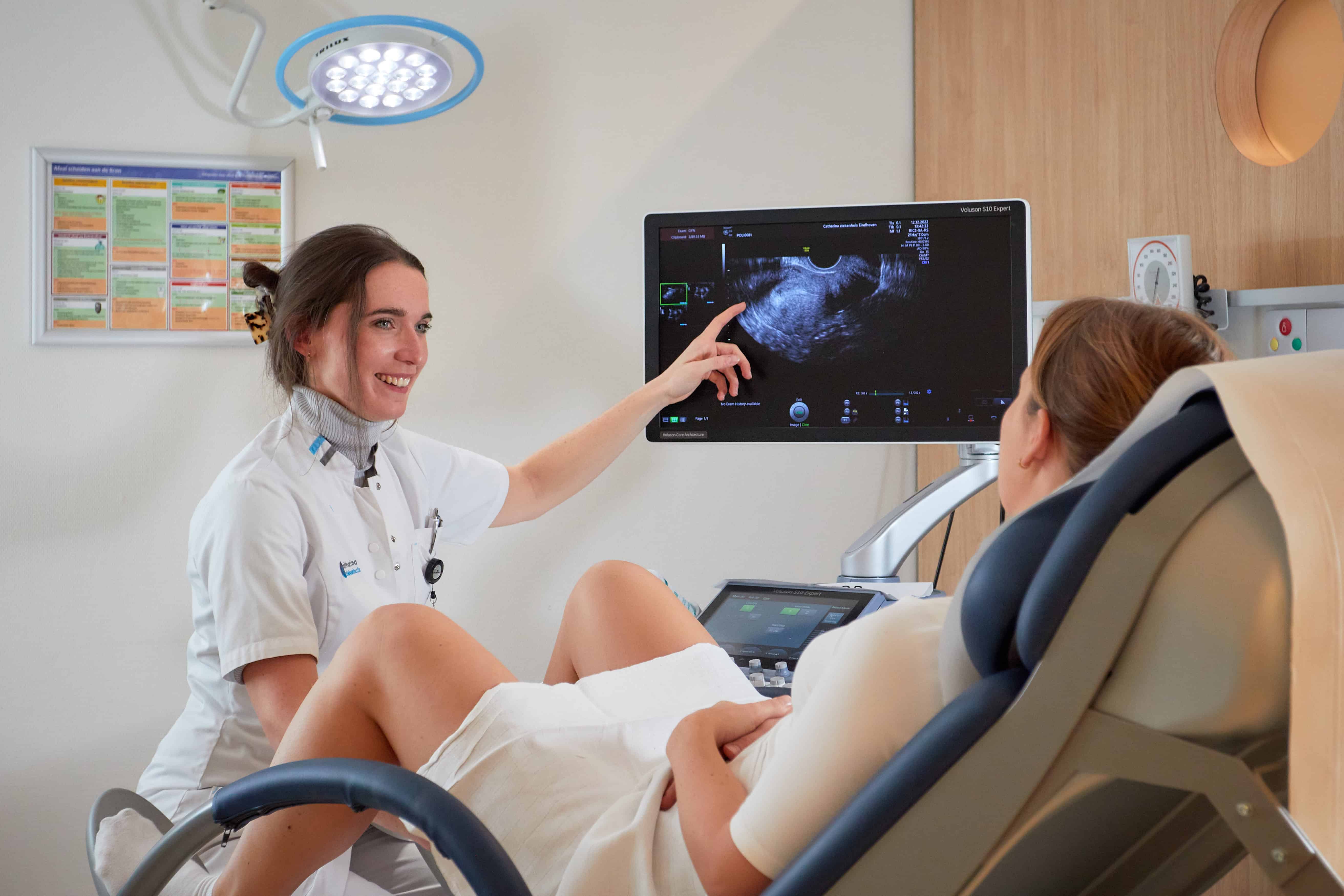
In the Netherlands, about 10 to 30% of women suffer from adenomyosis. This causes all kinds of complaints and even problems with fertility. Connie Rees, a researcher at Eindhoven University of Technology (TU/e), developed a new method to better recognize this condition. She recently obtained her PhD on the subject.
Why this is important:
Women suffering from adenomyosis often experience severe menstrual pain that does not respond well to usual painkillers. The condition also causes fertility problems. It is considered a form of endometriosis and is difficult to diagnose.
While endometriosis and adhesions in the abdomen are fairly easy to see through keyhole surgery, adenomyosis is more difficult to investigate. It can take up to eight years for a woman to get the correct diagnosis. Early diagnosis is especially important for a young woman because symptoms get worse over time. If treatment with hormones does not work, there is even a chance that the uterus may have to be removed.
Rees hopes a new ultrasound method will allow for earlier diagnosis and allow treatments to begin in a timely manner. This method reveals some of the uterus’ “secrets. Strong contractions during labor and abdominal pain during menstruation show that the uterus can contract powerfully. However, Rees used a new ultrasound technique to show that the uterus is constantly moving. “And we suspect that with adenomyosis because the uterine wall is affected, the coordination of movement is disrupted,” Rees explains.
The uterus moves
The researcher explains exactly how that works. Normally, one takes an MRI image of the uterus to assess what is happening. But the uterus is a muscle that makes specific movements. For example, the contraction of that muscle is very important for labor, but also for fertility in general. You can’t capture those movements on a still picture. “In the method we use, you actually make an ultrasound like the gynecologist normally does. Only we make a video instead of a picture. This allows us to see more accurately how a normal or just sick uterus is behaving.” Rees validated her method at the Catherina Hospital in Eindhoven. Hundreds of women participated in the study.
Sophisticated software analyzes the video. It places markers on specific points of the uterine wall. This gives the researchers insight into exactly how the uterus moves. Since each uterus has a unique shape, the markers still have to be placed partly manually. In the future, with the help of AI, a different approach may be taken.
Application in IVF
In addition to adenomyosis, other applications of the new technique are conceivable. For example, the ultrasound film may come in handy for patients undergoing fertility treatment, such as IVF. “The movements of the uterus may also affect how well an embryo can implant during IVF treatment. For example, the process may not go well because the uterus contracts too forcefully. Hopefully, we can provide better insight into this in the future.”
Treatment
The researcher not only wants to map the movements of the uterus but also eventually contribute to the development of new treatment methods. “With medication, for example, we can influence the movements. Unfortunately, it will take some time to confirm all this. In any case, I am happy that we have taken the first steps.”
There has been increasing attention to female disorders over the years, notes the researcher. “Both in hospitals and in the media. That’s great, because the more attention, the more likely we are to develop effective treatment options.”

